Renga 4.5 VERSION
Renga Software development team is exited to announce the latest release of Renga BIM system. This release brings you enhancements and optimizations – including better interoperability and integration between Renga and other BIM software – and a piece of new functionality that will speed up your project delivery. Read on to see what’s new in Renga 4.5.
Advancing information technology has made the Select, Copy and Paste number one commands among the Internet users. Exactly these basic tools have made working on your computer so convenient. By pressing the Ctrl+A shortcut, Renga users can now instantly select all the design data for further editing (fig. 1). And freshly enhanced copy command allows our users to re-use their Assemblies and Tables in other projects. The next Renga release will provide designers with the ability to copy and then paste to another project not only drawings but also schedules.
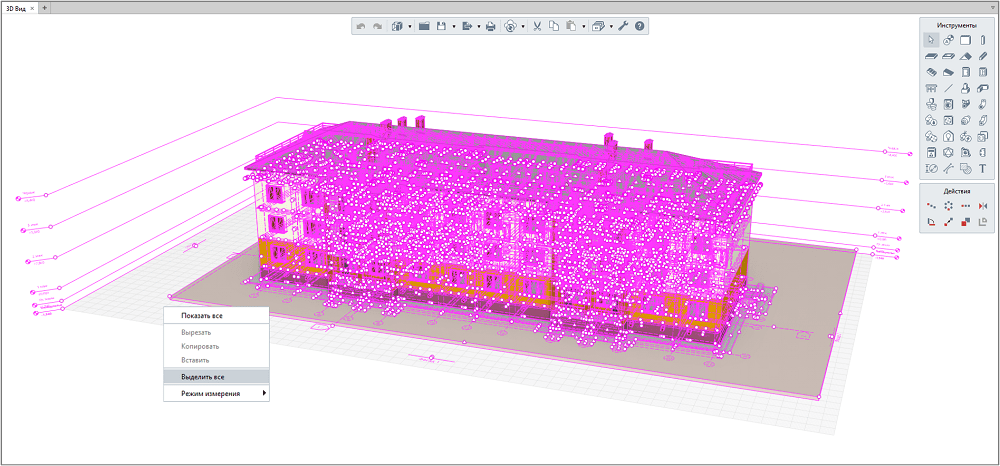
This release delivers new important features for IFC format functionality. At Renga Software, we pay considerable attention to transparent, open workflows, supporting and promoting the Open BIM approach. That's why our development team has extended the list of geometric representations of objects for IFC4 export. The ability to check the geometric representations of objects when exporting to IFC considerably improves interoperability and integration between Renga BIM system and other software. That would hopefully stop all the concerns regarding the loss of data when exporting through IFC. Much depends on the receiving software capabilities, and whether or not it will be able to read data and model geometry. Unsophisticated users rarely pay much attention to CAD software characteristics and components. These characteristics meanwhile can differ widely, for example some CAD systems run mathematical kernel and some don't. That's why IFC supports a large variety of geometric representations. The more advanced the receiving CAD system is, the more detailed description the exported model will have. Renga users can now check the geometric representation of objects when exporting to IFC. Reference View representation is the default value for IFC4 export settings in Renga. Now our users are allowed to export model objects using Axis, FootPrint and Body geometric representations (fig. 2).
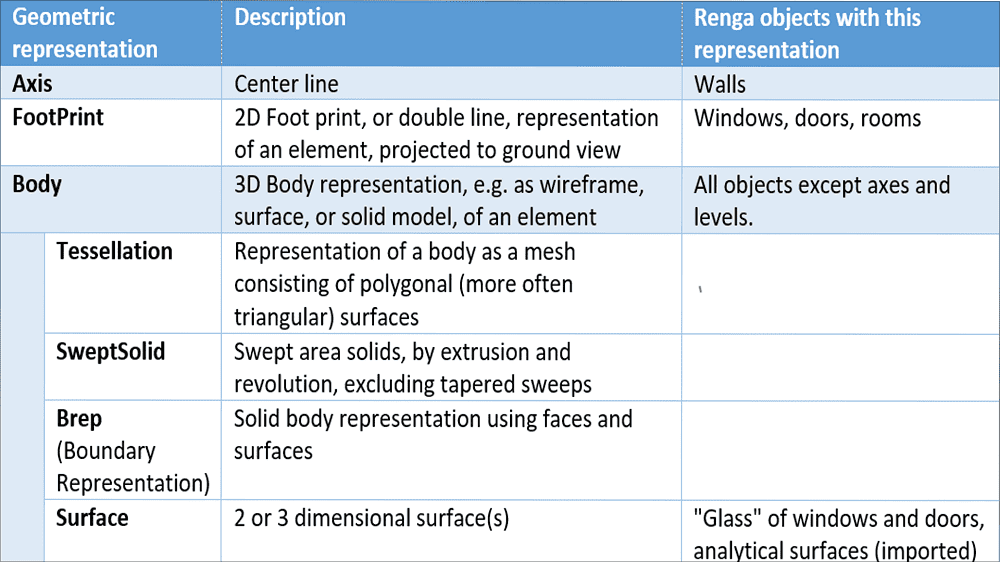
Body is the most important of these geometric representations. It is this representation that allows to display object 3D geometry for further export to BIM systems such as ArchiCAD, Revit, Tekla and others (fig. 3).
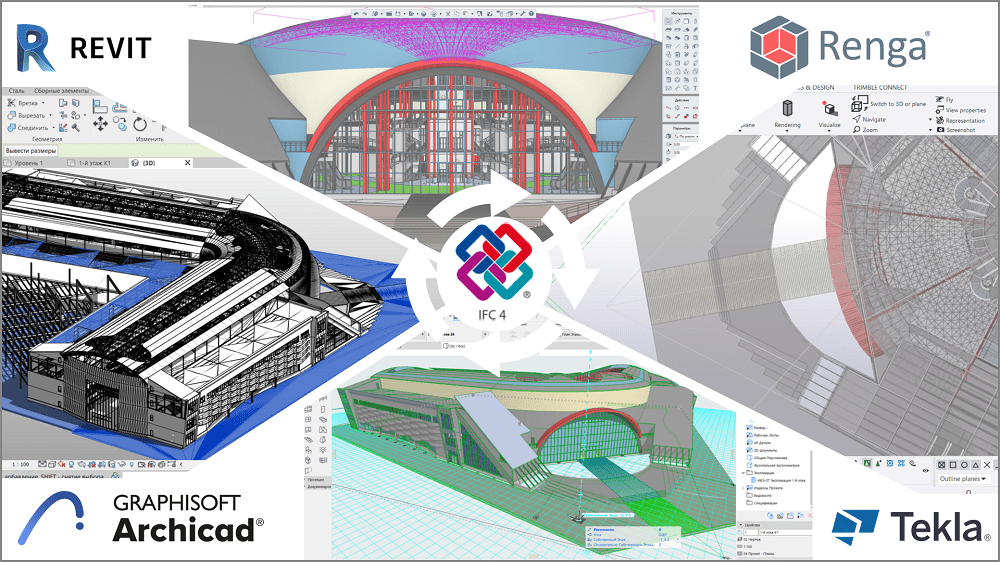
Body has its own representation types, each of which is used depending on the capabilities of the receiving software. For example, if you select SweptSollid representation type when exporting model to Navisworks, the model will display incorrectly. For proper displaying, the model should be exported as tessellated surface using the Tessellation representation type (fig. 4). To draw this type of geometry the receiving software doesn't require mathematical kernel. Tessellation is supported by various IFC viewers and Pilot-BIM common data environment (fig. 5).
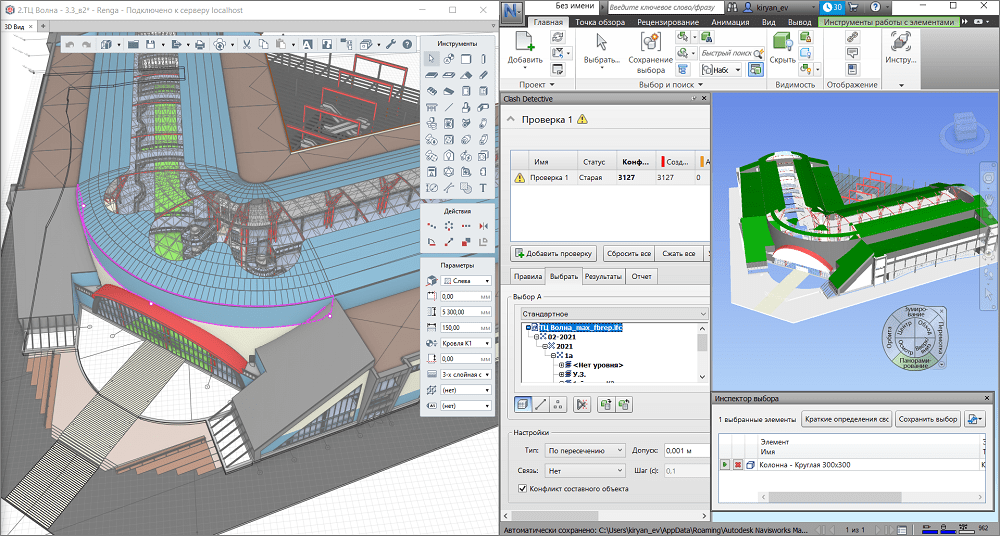
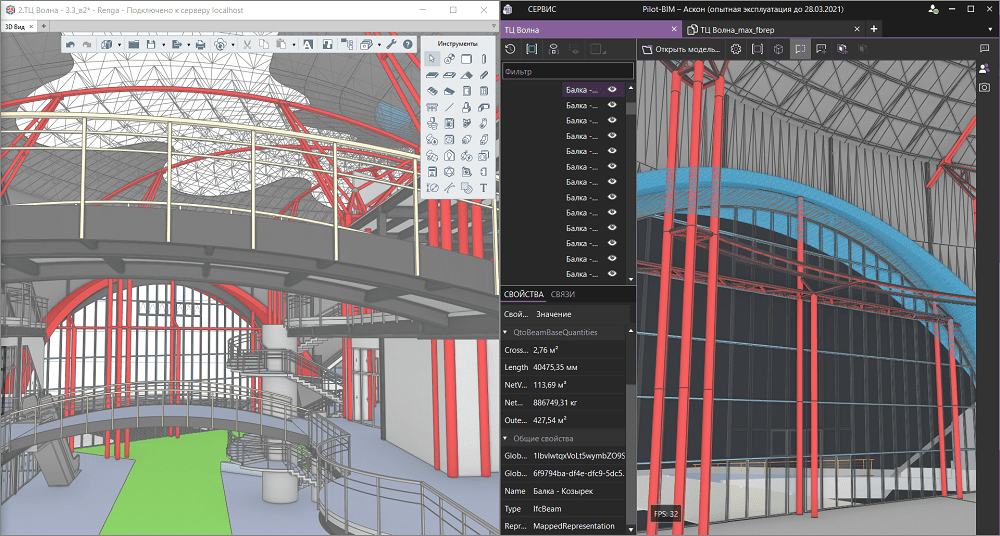
When it comes to interoperability, not only object representations, but also properties considered important when using models in other BIM systems. For example, when interacting with analysis software via IFC, it is essential to not only know the number values for quantities, but also to recognize what is the measurment unit for each quantity. Which is why our development team implemented feature that allows for exporting density, temperature, conductivity and voltage units to IFC.
Another significant piece of functionality from Renga product roadmap – feature enhancements for design documentation. To improve drawings production, we implemented the ability to control the display of objects that are part of Assemblies.
This functionality was highly requested by the structural engineers. For that to happen we implemented visibility settings for beams and columns. . Assembly tool allows them to create parts suitable for shipment. We know what generating the required drawings engineers need to set the visibility for elements on drawings. But assemblies are used in other disciplines as well. Which is why we also implemented the ability to control the display of wall foundations, ramps, floors, isolated foundations and walls in display styles. Users will find it extremely handy when, say, producing elevation drawings and wanting only the superstructure to remain visible (fig. 6).
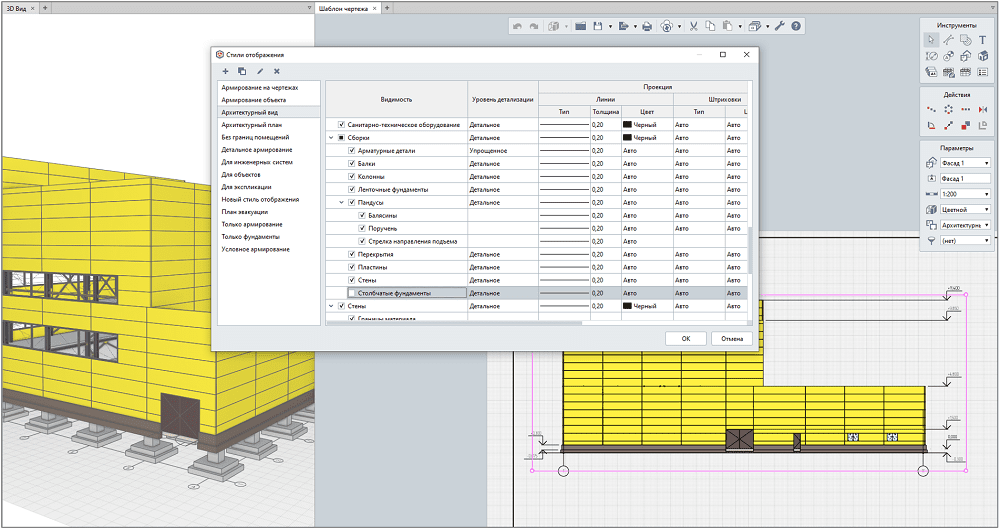
We will continue to improve automation capabilities for documentation in our upcoming releases. Download our full trial version of Renga right now and experience all tools and functionality that will lead you to improved project outcomes.




